Apple iPad 10.2-inch (9th Gen) review: small updates, still top value
The iPad 10.2-inch (9th Gen) makes small but meaningful updates that keep the cheapest iPad ahead of the pack
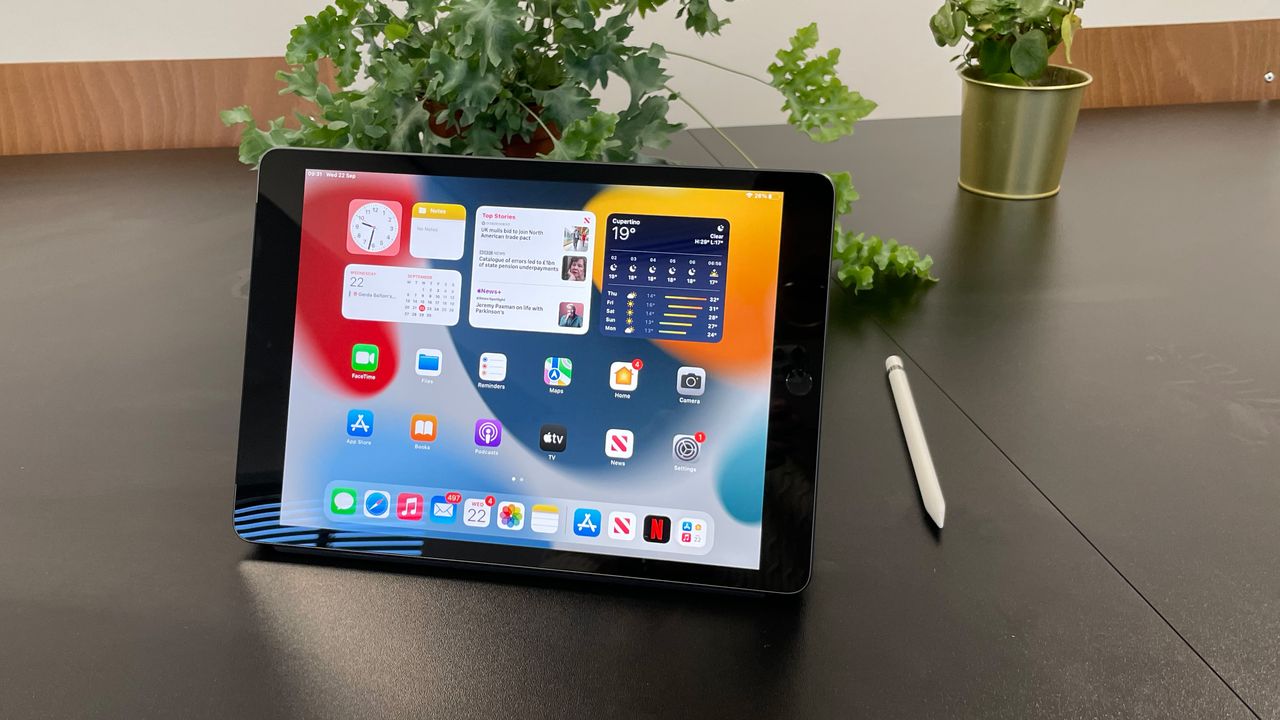
The iPad 10.2-inch (9th Gen) is an excellent budget tablet, and this new version fixes the two biggest gripes I had with its predecessor. It's just as capable for creative work as it is for watching YouTube, making it the cheap tablet you can do the most with.
-
+
Great value overall
-
+
Strong screen quality
-
+
Fast and capable
-
+
Better storage capacity
-
-
Apple Pencil's awkward charging
-
-
Weak camera quality
-
-
No landscape stereo speakers
Why you can trust T3

This iPad 10.2-inch (9th Gen) review is looking at the newest version of the cheapest tablet in Apple's range – and those who looked at the older model might find it pretty familiar.
In the iPad 10.2-inch (9th Gen), Apple has made only a few choice changes, but they're updates that I'm delighted to see, because they tick off the two biggest disappointments I had with the last version, and add a couple of extra treats on top. By adding Apple's True Tone screen technology and by doubling the storage, Apple has made this even harder to resist as one of the best tablets available today.
They mean that while this is still the most affordable tablet in the current iPad models range, it now feels less like the stripped-back budget version. Really, the only outward sign that's the low-cost model is that it uses an older design, but given that it's still made with Apple's usual fit and finish, that's hardly an issue.
What you've got here is a tablet with a bright and sharp screen, and fast processor that can handle any app or game in the App Store, the latest version of iPadOS with all its bells and whistles, stylus support for drawers and note-takers, a price that's a big chunk cheaper than the iPad mini (6th Gen), which is the next-cheapest option. It's one of the best iPads for students, as a tablet for kids, or as a general media tablet.
Apple iPad 10.2-inch (9th Gen) review: Price & release date
The iPad 10.2-inch (9th Gen) is released on September 24, 2021. The price starts from £319/$329/AU$499 for the version that comes with 64GB of storage. This is one of the improvements in the iPad this year: 64GB as the starting storage is double what the previous model offered, so that's nice boost for the same price.
You can upgrade that to 256GB instead for £459/$479/AU$729, which should be enough for the audience that this is really aimed at – it's a lot of downloaded videos, games and photos.
Those prices are for the Wi-Fi-only versions, but you can also add 4G connectivity to either of the models for an additional £120/$130/AU$200.
It's available in Space Grey or Silver finishes.
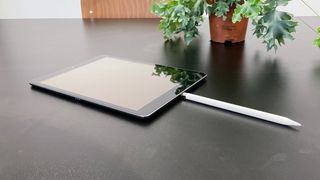
Apple iPad 10.2-inch (9th Gen) review: Features & what's new
The iPad 10.2-inch (9th Gen) features the same design as the previous… and stretching back a few models, actually. Instead of the all-screen look you get on the similarly-sized iPad Air (2020), you've got big bezels at the top and bottom (when held in portrait). On the bottom bezel is the Home button, with Touch ID fingerprint security. It looks less modern than the other models, but really, that's fine.
Having the chunky bezels has certain advantages – it's easier to grip without touching the screen, for example, and having a big button that takes you to the Home screen right on the front makes it easy to navigate. There are lots of people who'll use this tablet who would also be fine with the gesture controls of the other iPads, but there are also people – ranging from young kids, to older people, to those with mobility issues – where a nice grabbable bezel and a simple Home button are a real advantage, and I'm glad Apple makes a tablet that better suits them still.
And despite being less futuristic in design, it's not like it's poorly made or anything – it's Apple's usual excellent build quality, and the body is all glass and aluminium, of course.
On the front, within these bezels, is one major new feature, though: a new forward-facing camera with Centre Stage support. Centre Stage is clever new tech that means that the camera can actually follow you if you move while on a video call, and can can widen its view if two people are there, or narrow when it's just one person. It also puts you right in the centre of frame, so no need to fiddle and make that its not just showing the top of your head or anything.
It can do this because it's actually an ultra-wide lens, with a huge 122° field of view, and then it uses built-in smarts to identify when someone's face is visible, and then it narrows what it actually shows to just the bit where your face is. If you move, it changes which bit its showing to follow you. If someone else joins you, it widens the area to show you both.
It's a bit ingenious, and makes video calls just that bit easier. It's also quite a high-quality camera in general, pulling in lots of light and dealing with contrast better than its predecessor, so you're more likely to look lifelike and less like a moody, grainy shadow.
On the rear is still a regular camera, and this hasn't seen any major improvement – it takes perfectly serviceable photos in good light, and rapidly loses sharpness and contrast in darker scenes.
The screen is pretty much identical to the previous model, but the new feature here is that it now supports Apple's True Tone technology. This is the single biggest improvement we wanted to see from this model, so the new model wins major kudos just for this reason – we'll explain more about the screen and True Tone in the next section.
Inside, you've got two notable upgrades: the larger storage capacities that I've already mentioned, and the Apple A13 processor powering it all. This is the same chip you'll find in the iPhone 11, and it's a step up in speed compared to the previous model, though the change isn't that big. The advantage here is really more for future-proofing – the new processor is better at handling the more advanced features that are being built into iPadOS, and will make sure that this model can keep being supported for years to come.
Charging and connectivity is handled through the Lightning port at one end, and this is now the only iPad with a 3.5mm headphone jack, which might make it preferred by some music makers to the more expensive models. It also has a Smart Connector, which makes it easy to attach a keyboard case… though Apple's own Smart Keyboard for iPad continues to be hard to justify at its high price of £159/$159/AU$299. A 50% price increase to add a keyboard that has no processor or screen or all of that stuff in it? It's a bit much.
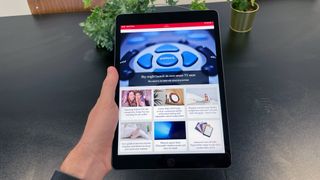
Apple iPad 10.2-inch (9th Gen) review: Screen & speakers
The screen in the iPad 10.2-inch is, you will not be surprised to learn, 10.2 inches in size. Perhaps more useful to learn is that it features a resolution of 2160x1620, which is 264 pixels per inch – that's the same sharpness as the iPad Pro 12.9-inch, so you're certainly not getting short-changed on detail here.
It's also lovely and bright at 500 nits, so it's generally vibrant and easily visible under strong lighting. What you don't get here is support for the wider P3 colour gamut, so there's just a little realism that's lost from colours, though this isn't a huge deal – the main place you'll miss it is in photos you took on iPhone that are synced over iCloud.
The other thing the screen lacks compared to all the more expensive iPads is a fully laminated display (bringing the pixels closer to the surface) and anti-reflection tech, so you might find it a little harder to see on bright days, but it does a great job overall.
I'm absolutely fine with these two omissions. I can easily image the next revision will add P3 support, and that will be nice, and it will probably make little different to anyone involved. If you're the kind of person who knows what kind of colour coverage you need from a screen, this probably isn't the iPad for you anyway.
As mentioned, the big addition to the screen is True Tone technology. True Tone uses a light sensor to detect what the ambient light in the room is, and then changes the colour balance of the screen so that white on the screen looks the same as a white piece of paper in the room does.
This makes it so much more pleasant to read on the iPad in the warm lighting that most houses have, and avoids that nasty blue screen tint so many computers have. It's so much kinder on the eyes, and makes this a much better screen for kids to be using in the evening, for example, than one without True Tone.
That's why I think it's such an important addition to have on the iPad that's most likely to gifted to kids, though absolutely everyone will benefit from it.
As mentioned before, the Apple Pencil (1st Gen) is supported here, and though its charging system is less slick than the newer version, there's no issue when it comes to accuracy or general performance. As a budget drawing or note-taking device – or for photo editing with precision brushes – this remains an extremely capable setup. Just a slightly clunky one compared to doing the same stuff on the iPad Air (2020) with its magnetic attachment to the tablet and its wireless charging.
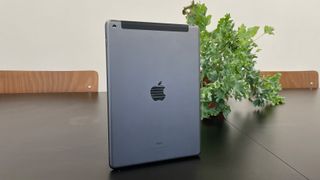
Apple iPad 10.2-inch (9th Gen) review: Performance and battery
The new processor here is the Apple A13, which is an upgrade from the A12 chip used in the previous model. This doesn't translate into a wondrous boost in speed compared to the older iPad – in reality, they're both plenty fast for general use anyway.
Opening and switching between apps is fast, websites load quickly, the interface rarely stutters or struggles… now, in this new version, you will see slightly faster loading and smoother scrolling of complex web pages, and something like a game will load a little faster.
But we're talking a few seconds saved here and there on occasion, rather than a transformation. Really, the advantage of the new processor is longevity – it's more capable at doing the cool advanced things that iPadOS is included more and more of, such as turning your handwriting into copyable text, analysing faces during a call with Centre Stage, or recognising text in images.
There will be more and more of this to come in the future, so a processor upgrade means that model will be well supports for future versions of iPadOS to come. It's about peace of mind, not speed.
When it comes to battery life, Apple rates this for 10 hours of light web browsing and similar uses, but that's probably a little low, based on how it's been in our use so far. This will vary depending on your apps, of course, but we'd expect a couple more hours than that – and like all iPads, it holds its battery very well when not in use.
During our Wi-Fi streaming video test, of two hours of Netflix movie with the brightness at maximum and the speakers at 50%, it lost about 30% of its battery.
Apple iPad 10.2-inch (9th Gen) review: Verdict
This is still the best cheap tablet if you want something that can be a surprisingly powerful creative tool as well as a way to watch video and browse social media. What the iPad gives you over even cheaper tablets is headroom – it does all the basics perfectly, and then you also get into video editing, illustration, music-making and any number of other things in exactly the same apps that people run on the iPad Pro.
It's a shame that it still doesn't offer proper stereo sound, considering how many people will use it to watch videos on – and better cameras would be nice too, so that it can be an even better creative tool for kids. And I'll certainly celebrate when the old Apple Pencil is finally replaced with the new version on this cheaper model.
But if you can't live with these issues, then it's good to know that the iPad Air solves every single one of them. But if you can live with them and want a tablet that's excellent value for work or play, the iPad 10.2-inch should still be top of your list.
Apple iPad 10.2-inch (9th Gen) review: Also consider
As mentioned above, the iPad Air is basically the next-generation version of this machine – it's got the new all-screen design, Apple Pencil 2, better speakers, an even faster processor, and a better rear camera (though it lacks the Centre Stage front camera). Here's our full iPad Air (2020) review.
From Android, the Samsung Galaxy Tab A7 is the place to look. It's got a 10.4-inch display that's more widescreen than that iPads, so is better for video (but less useful for apps), and stereo sound. And it's much cheaper even than Apple's tablet. But it comes with less storage, and it's less capable overall as a computer as well as a media device. But for those who mostly want to entertain the kids with YouTube (or yourself with Netflix), it's a strong alternative.
Sign up to the T3 newsletter for smarter living straight to your inbox
Get all the latest news, reviews, deals and buying guides on gorgeous tech, home and active products from the T3 experts
Matt is T3's former AV and Smart Home Editor (UK), master of all things audiovisual, overseeing our TV, speakers and headphones coverage. He also covered smart home products and large appliances, as well as our toys and games articles. He's can explain both what Dolby Vision IQ is and why the Lego you're building doesn't fit together the way the instructions say, so is truly invaluable. Matt has worked for tech publications for over 10 years, in print and online, including running T3's print magazine and launching its most recent redesign. He's also contributed to a huge number of tech and gaming titles over the years. Say hello if you see him roaming the halls at CES, IFA or Toy Fair. Matt now works for our sister title TechRadar.
-
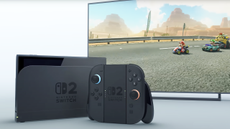 Nintendo suggests Switch 2 price will be "affordable", as it confirms launch time
Nintendo suggests Switch 2 price will be "affordable", as it confirms launch timePrevious price leaks could be true, with Nintendo's president revealing that "affordability" is important
By Rik Henderson Published
-
 KitchenAid's 2025 Colour of the Year brings a buttery warmth to every cooking space
KitchenAid's 2025 Colour of the Year brings a buttery warmth to every cooking spaceThis is going straight in my basket
By Lizzie Wilmot Published
-
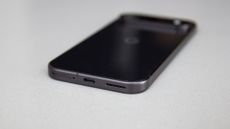 Google Pixel 9a reportedly coming with a stack of freebies
Google Pixel 9a reportedly coming with a stack of freebiesGoogle’s new Pixel 9a could come with a few somethings to sweeten the deal
By Chris Hall Published